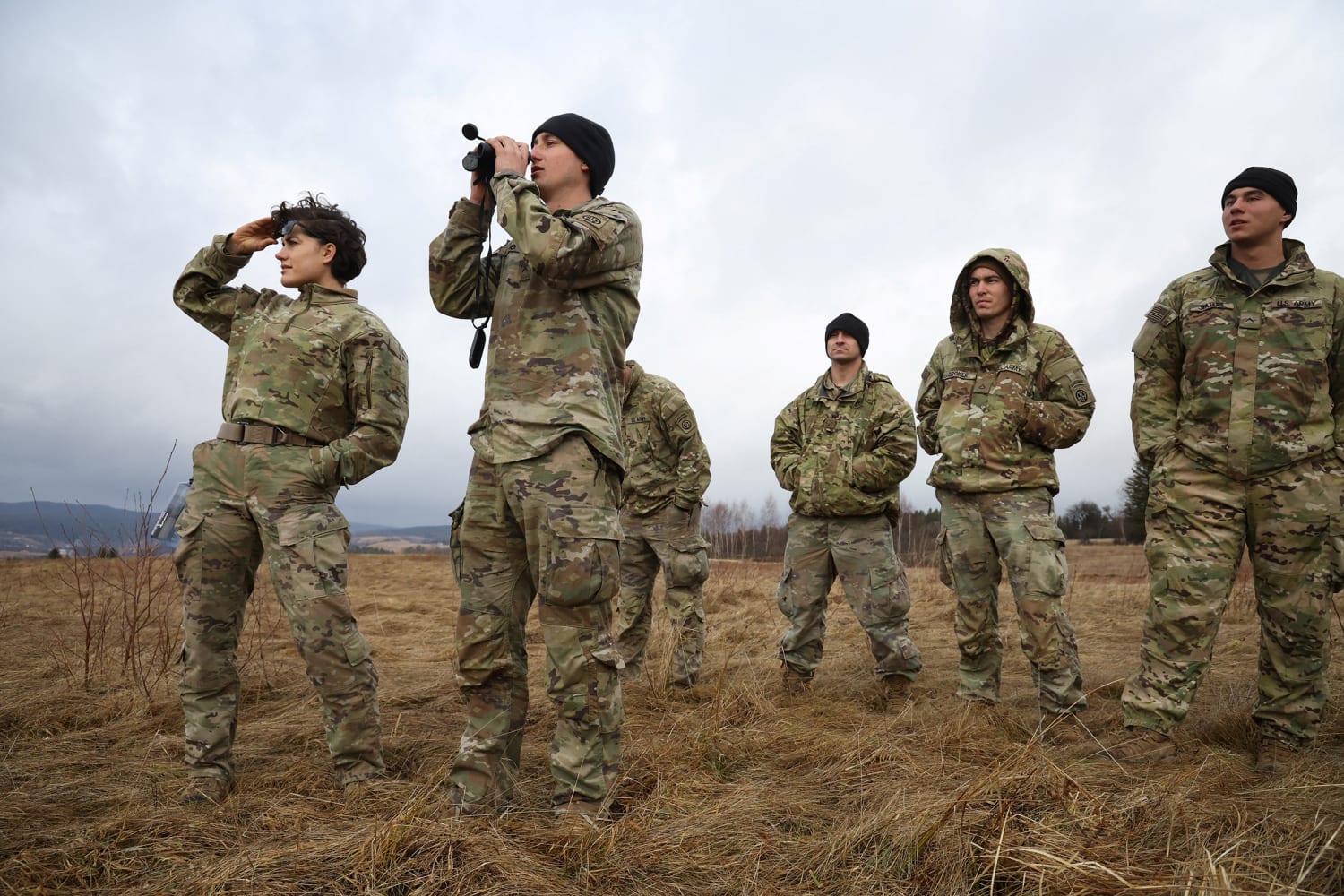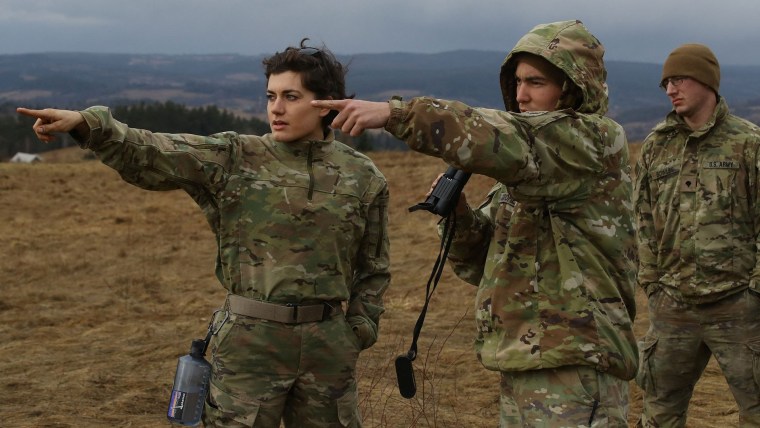The Biden administration has been working to set up a communication backchannel with the Russian military to prevent an accidental clash between U.S. and Russian forces along the Ukrainian border, as Moscow mounts a sweeping an attack across the country, according to two sources with knowledge of the discussions.
Such an arrangement would allow officials from both countries to exchange information to ensure that Russian forces attacking Ukraine avoid crossing paths with U.S. forces operating nearby in Eastern Europe, including along the Polish border and the Black Sea, the sources said. Still, they said, while the administration has different options for a “deconfliction channel,” as the military calls it, with Russia, none of the options completely remove all risk to U.S. troops in the region.
Some U.S. officials had reservations about setting up the communication channel before Russia launched its attack on Ukraine this week, fearing it could have been seen as tacitly accepting Moscow’s invasion, the sources said.
The channel would focus on the risk of errant missile strikes and ensuring Russian and U.S. aircraft and warships operate in separate areas, the sources said.
The communication channel could possibly operate between top U.S. military officer Gen. Mark Milley, chairman of the Joint Chiefs, and his Russian counterpart, Chief of Russian General Staff Gen. Valery Gerasimov, and between the NATO supreme allied commander, U.S. Gen. Tod Wolters, and another top Russian officer, the sources said.
Pentagon officials recently discussed possible communication channels with senior White House officials, one source with knowledge said.
But it remains unclear if Russia will agree to the idea.
On Friday, NATO Secretary-General Jens Stoltenberg told NBC News in Brussels that he’s very concerned about deconfliction with Russia’s military and has spoken to NATO’s supreme allied commander about ensuring deconfliction channels, including in the Black Sea.
In the Syrian conflict, where both U.S and Russian forces have operated, U.S. and Russian military officers set up a communication channel in 2015 designed to prevent collisions or accidental targeting of the other side’s forces. The channel was set up quickly after Russia began military action in Syria.
The arrangement eventually included a 24-hour hotline and regular discussions between U.S. and Russian officers overseeing fighter aircraft. Despite deconfliction protocols in Syria, there were several incidents that threatened to trigger a crisis between the two superpowers.
In November 2015, Turkey, a NATO member, shot down a Russian Su-24 fighter jet near the Turkish-Syrian border. The downing of the Russian warplane raised fears Moscow would retaliate against other NATO aircraft.
And in 2018, hundreds of Russian mercenaries fighting for the Assad regime attacked U.S. special operations forces at a small outpost in eastern Syria. The Russian government said it had no control over the mercenaries, while the U.S. said it rebuffed the attack and inflicted heavy losses without suffering any casualties.
The risk is very real,” said Ben Hodges, a retired U.S. lieutenant general who served as head of the U.S. Army in Europe from 2014 to 2017.
In the “fog and friction of war,” even well-trained troops and pilots can make mistakes, said Hodges, now Pershing chair in strategic studies at the Center for European Policy Analysis think tank.
Hodges said NATO aircraft in Eastern Europe and warships in the Black Sea likely had strict instructions to give Russian forces “a wide berth.”
Russia’s assault on Ukraine and an expanding U.S. and NATO presence in Eastern Europe mean the two militaries now are operating in close proximity. From cyber attacks spilling over the border, navigation errors, botched missile strikes or collisions in the air or in the Black Sea, there are plenty of opportunities for mishaps, Hodges and other experts said.
“The chance of a miscalculation or a military accident is not inconsequential,” said James Stavridis, a retired four-star admiral and former NATO supreme allied commander. “The Pentagon should be working to deconflict with Russia,” said Stavridis, now a NBC News national security contributor.
Even before the Russian offensive in Ukraine, the Pentagon had reported numerous instances of Russian warplanes and ships undertaking what it calls risky and irresponsible actions. On Feb. 16, three U.S. Navy P-8 surveillance planes flying in international airspace over the Mediterranean had close encounters with Russian aircraft that the Navy called “unprofessional.”
Josh Lederman contributed.
Source: | This article originally belongs to Nbcnews.com











